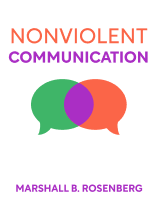

This article is an excerpt from the Shortform book guide to "Nonviolent Communication" by Marshall B. Rosenberg. Shortform has the world's best summaries and analyses of books you should be reading.
Like this article? Sign up for a free trial here .
What are NVC requests? How can NVC help you make sure that the other person understands the intentions and needs behind your request?
People often request what they need from others in indirect ways. However, this approach is unlikely to result in our needs being met. In NVC, requests are expressed in a specific, action-oriented way as opposed to vague and indirect statements.
Read more about NVC requests and how to use them.
What Are NVC Requests?
When making requests, we often assume others intuitively know exactly we want them to do. If they don’t, we often end up resenting them for not picking up on the underlying need behind the request. However, this attitude is unlikely to result in our needs being met. If you want someone else to meet your needs, you need to make specific requests using positive action language.
Request Positive Action
If you want others to meet your needs, it’s more helpful to request what you do want them to do than what you don’t want them to do. Making negative requests (like “Please don’t do that”) gives the listener little information about what you’re actually asking of them.
For example, imagine you’ve asked your spouse to spend less time at the office, and they respond by going out to eat with friends every night instead. Technically, they’ve complied with your request—but if your goal was to spend more time together, your need is still unmet.
Avoid Vague Language
Sometimes, people might make vague requests because they haven’t thought through what it is they actually want. For example, a father asking his son to “be more responsible” is making a vague request. If what he really wants is for his son to do exactly as he’s told, then asking his son to be responsible is really a roundabout way of asking him to be obedient.
NVC Requests vs Demands
In NVC, requests must clearly communicate that are asking for a favor rather than making a demand. Although it can help to specify upfront that the person is free to say no, the way you react to that “no” sends a far more powerful message.
In NVC, the first response whenever someone denies your request is always empathy. This doesn’t mean you can’t advocate for what you want or make further requests—it just means that before you push back, you take the time to fully understand and empathize with why this person is saying no.
Request Reflection
Any time you communicate with another person, you make implicit requests, even if those requests are simply for acknowledgment that you’ve been heard and understood. Go into each interaction with a clear idea of the requests you’re making of the other person.
Once you’re aware of what you’re expressing and requesting, make sure that’s the same message the other person is hearing. To do that, ask them to reflect back what you’ve said in their own words. If there is a misunderstanding, your response should make it clear that you accept responsibility for it.

———End of Preview———
Like what you just read? Read the rest of the world's best book summary and analysis of Marshall B. Rosenberg's "Nonviolent Communication" at Shortform .
Here's what you'll find in our full Nonviolent Communication summary :
- How nonviolent communication lets you have more compassion for yourself
- Why nonviolent communication is the key to fostering authentic connections with others
- The 4 steps to expressing yourself with empathy towards others






